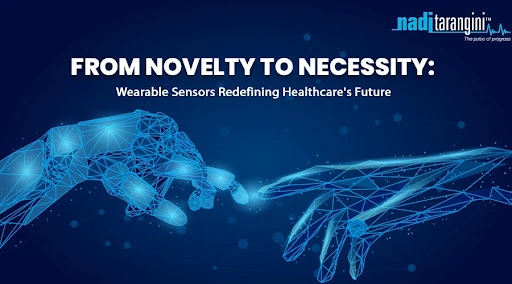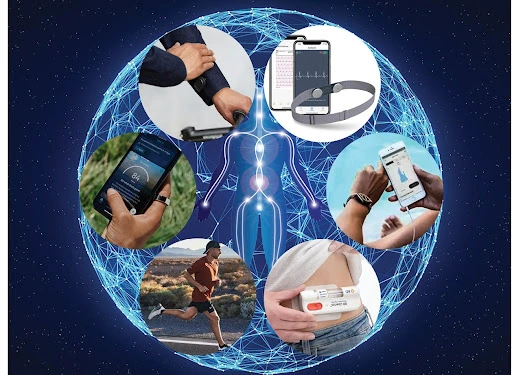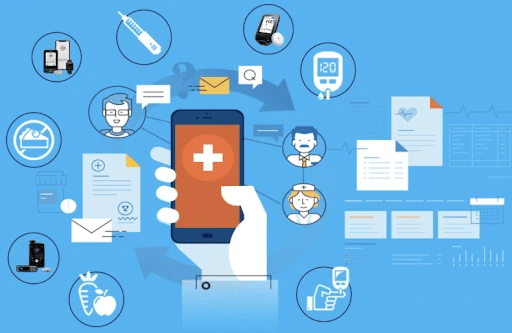From Novelty to Necessity: Wearable Sensors Redefining Healthcare’s Future

From Novelty to Necessity: Wearable Sensors Redefining Healthcare’s Future
In the rapidly evolving landscape of healthcare, technological advancements are reshaping the way we approach patient care. One of the most groundbreaking developments in recent years is the integration of wearable sensors as pioneers of remote monitoring in healthcare. These sensors, once considered novelties, have now become indispensable tools, playing a critical role in safeguarding health and empowering both patients and healthcare professionals.
Gone are the days when healthcare monitoring was confined to occasional clinic visits or hospital stays. With the advent of wearable sensors, remote monitoring has transitioned from a futuristic concept to a present-day reality. These sensors have paved the way for continuous and real-time collection of physiological data, granting individuals newfound control over their health while providing healthcare professionals with comprehensive insights into patient well-being.
The Evolution of Wearable Sensors
Wearable sensors have come a long way from simple pedometers to advanced, multi-functional devices capable of monitoring a myriad of physiological parameters. From wrist-worn fitness trackers to sophisticated patches embedded with cutting-edge technology, these sensors have transcended their initial purposes of merely counting steps or tracking sleep patterns. Today, they serve as comprehensive health monitors, continuously collecting real-time data that provides invaluable insights into an individual’s well-being.

These devices have become the linchpin in connecting individuals with their healthcare providers in real-time, breaking down geographical barriers and ensuring that crucial health information is readily available. The significance of these sensors lies not just in their ability to track basic metrics like heart rate, activity levels, and sleep patterns, but also in their capacity to gather nuanced and diverse data sets. They can monitor blood pressure, glucose levels, ECG readings, skin temperature, and more, offering a holistic view of an individual’s health status.
Empowering Individuals with Data
The constant stream of data serves as a powerful tool for healthcare providers. It allows for early detection of abnormalities or deviations from baseline readings, enabling timely interventions and personalized healthcare strategies. The right data set is useful for the right set of people through remote monitoring, healthcare professionals can identify patterns, predict potential health issues, and implement preventive measures before conditions escalate, ultimately improving patient outcomes.

These devices facilitate the collection of population-scale health data, aiding in the analysis of trends and patterns across diverse demographics. This aggregated data empowers researchers and public health officials to identify health trends, assess the effectiveness of interventions, and devise targeted strategies to address prevalent health concerns within communities. With one data set, you can get multiple applications which further helps in policy making.
Furthermore, the integration of artificial intelligence (AI) and machine learning algorithms with sensor data amplifies their capabilities. These technologies enable the interpretation of vast amounts of data, helping in the identification of subtle correlations and anomalies that might escape human observation. This amalgamation of sensor technology and AI not only enhances the accuracy of diagnoses but also streamlines the decision-making process for healthcare providers.

Patients can actively participate in their care by monitoring their vital signs and sharing data with their healthcare providers. This fosters a collaborative approach to healthcare, promoting proactive measures and informed decision-making, ultimately leading to improved patient satisfaction and better health outcomes.
As the technology continues to advance, the industry must work collaboratively to establish robust frameworks that ensure the responsible and secure use of health data.
Looking ahead, the future holds exciting prospects for wearable sensor technology in healthcare. Advances in artificial intelligence and machine learning will further enhance the capabilities of these sensors, enabling more accurate predictions and personalized health recommendations. Additionally, the integration of sensors into smart clothing and implantable devices opens up new frontiers in remote monitoring, promising even more seamless and self-effacing healthcare solutions.


